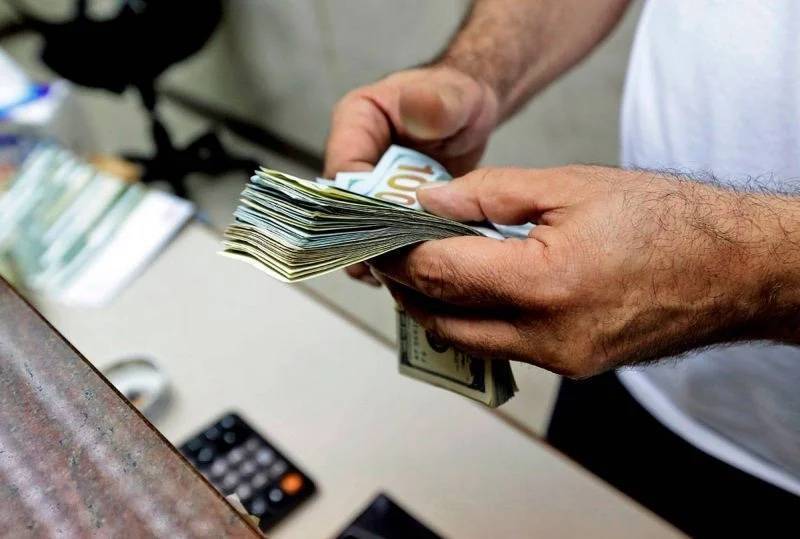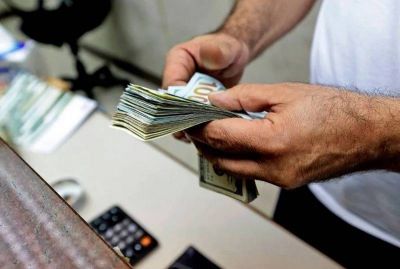
Nearly two weeks after fully opening the floodgates, Banque du Liban (BDL) has finally narrowed the terms and conditions for the conversion of Lebanese lira into “fresh” dollars at its Sayrafa platform rate, which is generally lower than that at foreign exchange shops.
This move shook up the parallel market rate, which had been hovering between LL42,000 and LL44,000 to the dollar since December.
The rumor that BDL would tighten the modalities of these conversions notably authorized by Circular No. 161 was confirmed yesterday to L’Orient-Le Jour by several banks.
A Bank Audi employee pointed to “BDL instructions transmitted between Friday evening and yesterday morning” to stipulate that “companies can no longer benefit from Sayrafa” — i.e. converting amounts in lira to dollars at Sayrafa rate — and setting a “LL100 million per month” ceiling for individuals.
A source at BDL confirmed the LL100 million individual limit, and a source at Blom Bank corroborated their statement. AM Bank CEO Marwan Kheireddine declined to offer further comment.
Sudden change of course
Some banking institutions had initially opted for the LL100 million ceiling to limit conversion operations even before BDL had imposed its own limits, while others had opted for a much higher ceiling.
The measure was basically the same for all: clients would first come to their banks to deposit funds to be converted (the entire limit in one go) and would return to their banks another day to collect the equivalent in “fresh” dollars.
A banker who declined to be named said that BDL’s “sudden change of course” forced banks to contact customers who had deposited lira on Thursday (Friday was an Orthodox Christmas holiday) to ask them to come and retrieve the funds that could not be converted.
“Fortunately, there were no incidents, but it would have been better if BDL had warned us in advance that it would close the tap,” the banker added.
Stable rate at the end of the day
The tightening of the Sayrafa- related terms has logically been reflected in the demand for dollars from exchange shops, pushing the rate from around LL43,000 on Sunday night to around LL46,000 by Monday afternoon, according to rate-indicator platforms Lirarate.org and Adde dollar.
Although stable at the end of the day Monday, the rate eventually re-increased to nearly reach the rate posted prior to Dec. 27, when BDL had temporarily removed the conversion limits.
Updated every working day according to an undisclosed BDL mechanism, the Sayrafa rate is still fixed at LL38,000 to the dollar. This rate, which had been fluctuating rather slowly, abruptly increased by almost LL7,000 by BDL on Dec. 27. It has not changed since then.
Since the limits were lifted, the number of daily transactions at the Sayrafa rate exploded all records, with an average of $233.4 million over five days between Dec. 28 and Jan. 5, according to BDL.
The opacity of the foreign exchange market makes it impossible to gauge the extent to which speculators were able to capitalize on the temporary limit lift by exploiting the difference between the Sayrafa rates and the parallel market.
On Sunday evening, BDL issued a statement explaining that the average $233.4 million — calculated based on daily sums published by BDL — accounts for dollars that the institution “bought and sold” and “purchases and sales of dollars made by banks and exchange offices, which are supposed to be recorded on the platform.”
It considered the increase in volumes of the latter “normal,” but did not provide details on the breakdown of the reported volumes.
Lebanese banks still restrict the access of a majority of their clients to tens of billions of dollars of deposits. These restrictions were unilaterally adopted at the beginning of the economic crisis in 2019 and have still not been legalized.
This situation is behind the de facto distinction between “fresh” dollars — exchangeable at the real market rate — and “bank dollars” or “lollars” stuck in banks.
Apart from operations made at the Sayrafa rate, various market players obtain dollars from legal and illegal money changers. The demand for dollars is very high, as evidenced by the depreciation of the lira, which has lost more than 95 percent of its value since 2019.
Capital control: Draft law is almost ready, according to Bou Saab
The joint parliamentary committees held a meeting Monday to discuss the draft law establishing a formal capital control that should legalize, in principle, the banking restrictions imposed on depositors since 2019.
Deputy Speaker of Parliament Elias Bou Saab, who also chairs the joint committees, wrote on his Twitter account that the amended draft could be adopted as early as the next meeting.
In a statement to al-Markaziya news agency, Bou Saab added that one of the provisions (Article 6) allows depositors whose access to foreign currency accounts was restricted to withdraw at least $800 each month, half in foreign currency and half in Lebanese lira at the market rate.
This provision looks like an updated version of the mechanism of BDL’s Circular No. 158. Launched in June 2021, it allows, under certain conditions, depositors to withdraw $400 “fresh” and the equivalent at the rate of LL12,000 to the dollar ($200 in cash and $200 usable only by card).
The draft law formalizing capital controls is far from enjoying unanimous support. Critics say it enshrines the unjust and unconstitutional distinction between “old” and “new” deposits and pardons the banks of contact violations with their clients.
This article was originally published in French by L'Orient-Le Jour. Translation by Joelle El Khoury.
